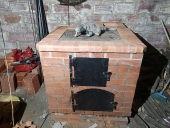bren reece wrote:Hi all, I'm looking to buy a plot of land 1000sq m or so to put a tiny home on it. I'm seeing properties say only tents campers and houses on wheels. What does this mean? Only temporary camping allowed on your own land. I'm just starting to look and could use some pointers.
What you want to do is more complicated than it seems.
So basically in Portugal land has two kinds of designations, 'urban/residential', or 'rural/agricultural'.
If you want to do things legally and legitimately and not risk being thrown off your own land, you need to look for land that is designated 'urban', as you cannot legally live on or build a house (tiny or otherwise) on rural land. Some land may have bits that are designated urban and bits that are designated rural (for example, a land with a legal house with olive groves attached).
If a land is designated urban but has no house, this means it can be a building plot, but not a farm, etc.
If you want to build a structure on your land, even if it's just an agricultural building, you need to get planning permission if you don't have it. You need to have a qualified architect draw up a project, file it with the council, pay a bunch of money, get permission to start, etc. It takes months, it can be quite expensive, and then you only get a limited amount of time to start the work.
You are allowed to have temporary structures 'stored' on your land though, for example tents, tipis, caravans, on the condition that they have no foundations (so you can't build a concrete base for your caravan for instance). That and they need to be able to be dismantled or removed, so you can't just build a tiny house that can't be dismantled. And you are not legally allowed to reside in these temporary structures full time unless you have planning permission for them as a legally registered abode, which can be hard to get depending on your property and location.
So basically the land you are seeing is likely not land that is legal for full time habitation or usable for building a house. It's usually quite cheap for this reason. Lots of people buy these agricultural-only lands thinking they can live in a caravan, or build a cob building with no planning permission, or something, and have a permaculture project. In some places the council and your neighbours may turn a blind eye, but in a lot of places you will risk being fined and thrown off your land.
So be very careful when you're buying your land to make sure that you are legally allowed to do what you want to do with it. Go through a good estate agent that can explain to you in English. If you want to build a house with foundations (tiny or otherwise) you will need urban-designated land with planning permission. Turning 'rural' land into an 'urban' designation is not worth bothering with as it is very difficult, if not often impossible.
Also be aware that there are a lot of restrictions on the ways you can build new buildings in Portugal and if the house is legitimate it needs to be designed by an architect and will have to be quite conventional, with like standard sizes for doors, minimum sizes for rooms, and other mandatory regulations which are often quite silly (like every new build must have a bidet in the bathroom), so you can't just design it however you like.
Your best bet will be to find land with a small ruin that used to be a
house for habitation. Many of these would not get permission to be built for habitation purposes now-a-days but if it is registered to legally exist, and is marked in the registo cadastral that it was/is a house for habitation, even if it's a tiny little hovel, you will find i t
much easier to make it into a legal abode again. There are a lot of lands with ruins, but most of them were agricultural support buildings and you can't legally make them into a house or live in them (a lot of people buy cheap land with ruins thinking they can do this, only to be bitterly disappointed when they learn that it's not allowed). Tell your estate agent that you are only interested in ruins with an 'urban' designation that can be turned back into a house.
We've just bought 4ha that has a ruin in the middle. It's very small, but people used to live in it so it's registered as a house not an agricultural shed and we will be turning it back into a house to live in. We would never get permission to build anything new, but rebuilding a ruin is much easier permission-wise. Something like that is probably your best bet, plus doing up a ruin is easier than building a tiny house from scratch in some ways.
Hope this helps.



